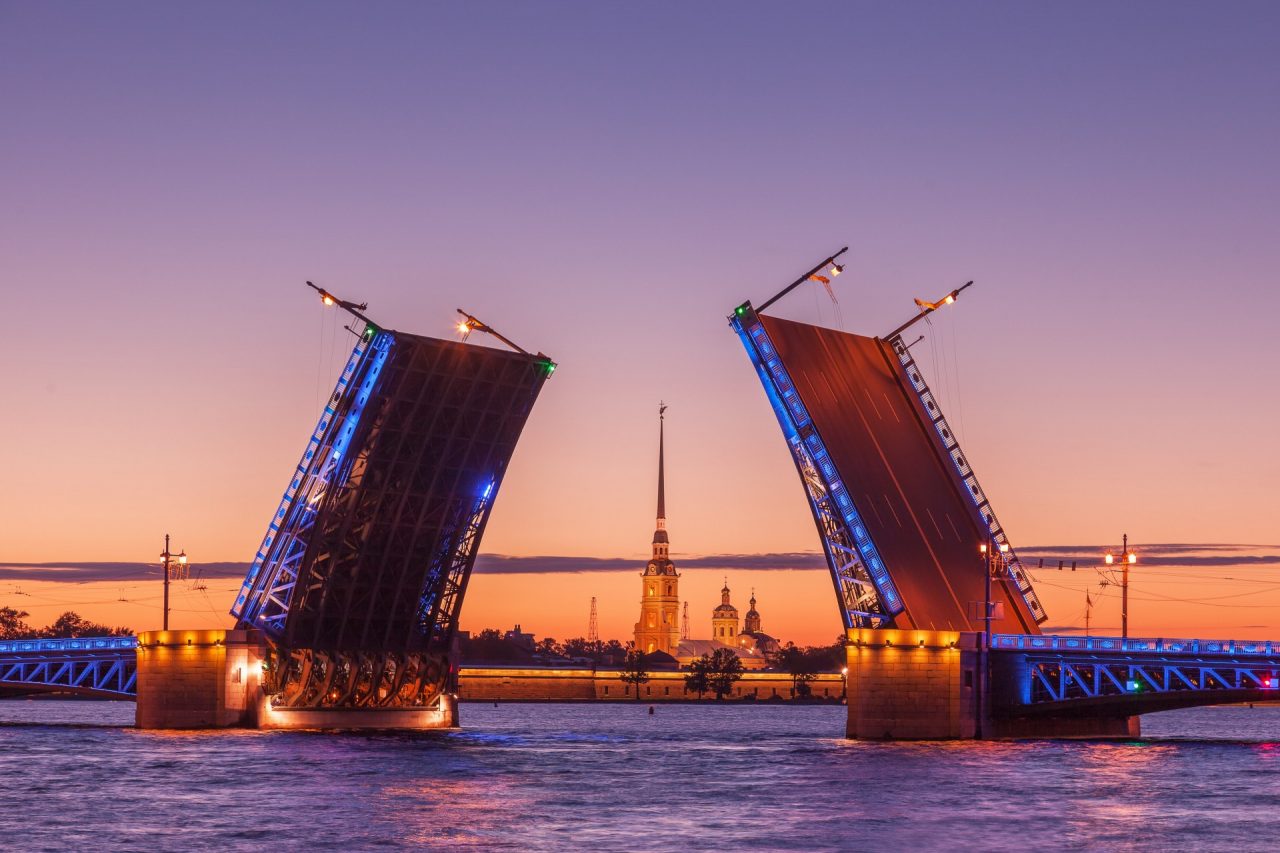St. Petersburg is often called “the Venice of the North” because of its canals. But unlike the iconic Italian city, which is dotted with postcard-perfect arched bridges crossing its many waterways, St. Petersburg is famous for its drawbridges.
These engineering works have their roots in the history of this majestic Russian city. They are now recognized as true works of art, many adorned with statues or Art Deco iron work. Yet their value goes beyond the aesthetic given their functionality for the economy of this modern and rapidly-changing metropolis.
Their sheer numbers also make them unique. The 342 bridges in the city – if joined together – would measure a total length of 16 kilometers (9.9 miles), a length that recalls the size of the bridges that connect Hong Kong to the Chinese mainland. In the case of St. Petersburg, the drawbridges spring from an vision city planners that decided back in the 19th century to build a mobility system around the Neva River and the city’s canals.
The drawbridges of St. Petersburg
The appointment for aficionados is at 1:00 AM, at the pier of the Palace or on the road that leads to the Admiralty pier. That’s when the two most famous bridges in St. Petersburg open: the Palace Bridge (Dvortsoviy Most, which opens at 1:10 AM) and the Trinity Bridge (Troitsky Most, which opens at 1:20 AM).
These two drawbridges are the flagships of St. Petersburg’s 342 bridges. There are 12 drawbridges, 9 of which still open regularly to allow ships to pass through.
Despite their artistic value, they are also important works of engineering. The Palace Bridge, for example, which is located near the Hermitage Museum, was finished in 1916 and is 260 metres (853 feet) long, and during the day is one of the city’s main arteries. At night, the 45° inclination of its arms allows large ships to travel along the Neva River to the Baltic Sea.
The Trinity Bridge is even larger and older. Its length reaches 582 metres (1909 feet), and the first stone was placed in 1897 under Tsar Nicholas II, who decided to make it a symbol of a military alliance with France. Work was completed in 1903 by French builders. The engineer Gustave Eiffel, the father of the Eiffel Tower, was a candidate to build it – but the Tsar instead chose another design.
These are just a few of the many drawbridges still active on the Neva River. Many of them, such as the Annunciation Bridge (completed in 1850, when it was the longest bridge in Europe), have unique features that enrich the artistic value of the city, as well as its commercial role in Russia.

Drawbridges over the Neva River
Admiring the illuminated arms of the drawbridges that rise over the Neva River is one of the favorite pastimes for tourists from all over the world. Despite its popularity, this spectacular nightly show is staged for commercial reasons.
St. Petersburg and its massive river remain a strategic gateway for Russian naval transport, covering the route connecting the Volga with the Gulf of Finland and the Baltic Sea. The Neva River flows through St. Petersburg in the “last mile” of a commercial canal built during the days of the Soviet Union and still active today, connecting Russia’s heartland with the Baltic Sea, the Azov Sea and the Black Sea. It even allows some cruise ships to travel between Moscow and St. Petersburg.
This is why the spectacle of the drawbridges can only be enjoyed at night. During the day these beautiful giants seem to fall asleep, allowing the city traffic to pass over.
The bridges of St. Petersburg: the incredible variety of unique works of art
What is striking about the bridges in St. Petersburg is their incredible variety. They range from the Bolshoi Obukhovsky, the modern cable-stayed bridge that measures 2,824 meters (9,265 feet) in all, to the Alexander Nevsky, the longest drawbridge (906 meters, or 276 feet, including the two ramps), to the Hermitage Bridge, the first permanent bridge built in the city between 1763 and 1766.
Modernity and history, advanced engineering and art coexist in these infrastructure works that combine beauty with utility, transforming a city built on water into a modern metropolis where almost 5 million people live and move every day.

